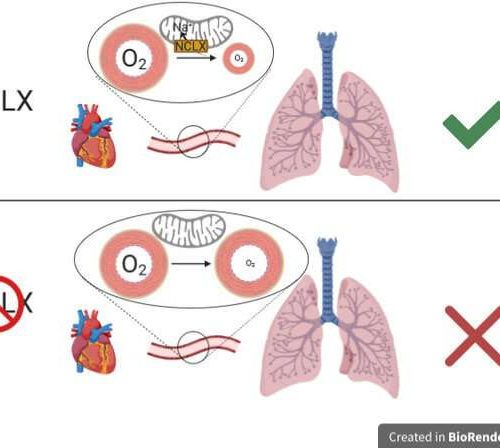by Bill Snyder, Vanderbilt University An MRI with increased signal in the posterior part of the internal capsule which can be tracked to the motor cortex consistent with the diagnosis of ALS. Credit: Frank Gaillard/Wikipedia A protein linked to amyotrophic lateral sclerosis (ALS), a progressive neurological disease that causes muscle weakness, may be a key...
Researchers devise approach to treat rare, incurable form of blindness
by University of Wisconsin-Madison Best vitelliform macular degeneration, or Best disease, is an inherited eye condition that typically leads to blindness over the course of a few decades. The disease can be caused by more than two hundred mutations in the BEST1 gene. The researchers were able to correct the disease in stem cells from...
Slowing down a ‘helper’ cell may someday make vaccines more effective for seniors
A surprising new concept for boosting the power of flu vaccines might also boost future COVID-19 vaccines CINCINNATI CHILDREN’S HOSPITAL MEDICAL CENTER UNDESIRED EXCESSIVE INTERLEUKIN-10 (IL-10) PRODUCTION IN AGED MICE COMES PRIMARILY FROM TFH CELLS, ACCORDING TO NEW FINDINGS PUBLISHED IN SCIENCE ADVANCES. THIS CHART SHOWS THAT WHEN THESE CELLS ARE STIMULATED… view more CREDIT:...
Should you really be behind the wheel after concussion?
AMERICAN ACADEMY OF NEUROLOGY MINNEAPOLIS – Even after all of their symptoms are gone, people who have had a concussion take longer to regain complex reaction times, the kind you need in most real-life driving situations on the road, according to a preliminary study released today that will be presented at the American Academy of...
A safer cell therapy harnesses patient T cells to fight multiple myeloma
AMERICAN ASSOCIATION FOR THE ADVANCEMENT OF SCIENCE A treatment for multiple myeloma that harnesses the body’s cancer-fighting T cells was safe in humans and showed preliminary signs of effectiveness, according to a clinical trial involving 23 patients with relapsed or treatment-resistant disease. Although more research is needed to determine how well the treatment works, the...
Pimavanserin reduced symptoms of dementia-related psychosis in phase 3 trial
A large-scale trial has found a treatment with pimavanserin substantially reduced psychotic symptoms and reduced risk of relapse of those symptoms compared to placebo in people with dementia, a condition for which no treatments are currently licensed UNIVERSITY OF EXETER A large-scale trial has found a treatment with pimavanserin substantially reduced psychotic symptoms and reduced...
Scientists decipher key mechanism in hypoxia
by Centro Nacional de Investigaciones Cardiovasculares Carlos III (F.S.P.) The figure illustrates the role of the mitochondrial Ca2+/Na+ exchanger (NCLX) in the early adaptation to low oxygen concentrations (hypoxia) through the entry of sodium into the mitochondrial interior. This role is exemplified by hypoxic vasoconstriction of the pulmonary artery, which connects the heart to the...
ENCODE 3 project details the inner workings of the human and mouse genome
by NIH/National Human Genome Research Institute The Encyclopedia of DNA Elements (ENCODE) Project is a worldwide effort to understand how the human genome functions. With the completion of its latest phase, the ENCODE Project has added millions of candidate DNA “switches” from the human and mouse genomes that appear to regulate when and where genes...
Antioxidant-rich foods like black tea, chocolate, and berries may increase risk for certain cancers, new study finds
by Hebrew University of Jerusalem It is a fact that has long baffled doctors: Cancer in the small intestine is quite rare, whereas colorectal cancer, a neighboring though much smaller organ, is one of the leading causes of cancer death for men and women. What is it about the colon that seems to attract cancer?...
Amid the rush for COVID-19 drugs, a case for the helicase
Upon entry into our cells, SARS-CoV-2 immediately gets to work replicating itself. The process is nothing short of impressive: A suite of enzymes and proteins work to copy the virus’s genetic material into thousands of more copies, wrapping each in proteins and lipids, and ultimately sending them bursting out of the cell-like confetti from a...







